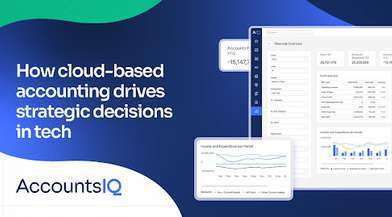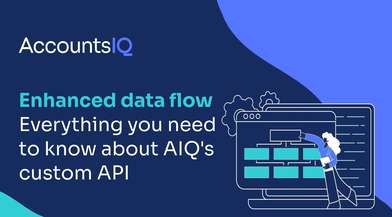
Cloud computing has taken the commercial computing applications market by storm. Cloud technology provides easy access to vast quantities of high-performance computer processing and storage infrastructure through secure Internet gateways. With cloud computing, the complexity of managing a Client’s entire IT infrastructure is also completely outsourced resulting in considerable labour savings for the Client Company and its users – this in an area where there is a continual shortage of such skills. Cloud techology provides massive scalability for future and gradual expansion (without service interruption), 99.99% reliability, high performance, and the initial infrastructure requirements are specifically configurable to a variety of Client individual needs from the more modest to the very largest processing and storage requirements. All of these competences and capabilities tend to be provided at a relatively low monthly cost compared to traditional dedicated in-house infrastructures.
In this, our third instalment of Cloud Computing, we put facts and figures to the cost comparisons and resulting savings:
Part 1 – An Introduction to the Cloud
Part 2 – A look at Cloud Security
Part 3 – Analysing the Cost Savings of Cloud Computing
Analysing and comparing the relative costs of two completely different business models is always going to be tough and involve a number of assumptions. So, for this purpose we are going to compare an example of a typical mid-sized (SME) business infrastructure configuration on a traditional In-house (“On premise”) Computer installation with that of a comparable Cloud Computing operation: the purpose being to give an idea of the relative cost differences and to try to quantify them as much as possible. The assumptions we have made are straightforward and simple and are obviously not going to apply to every individual Client Company. For this reason we have provided this Excel Spreadsheet we have developed so that you can plug in your own data and variables and test it in relation to your own particular requirements. You can find this Link at the bottom of this article. However, remember that Cost isn’t everything when it comes to evaluating your business IT strategy. Security, reliability and continuity of service are also important factors.
The Total monthly cost of either model (in-house or cloud based) is a combination of the calculated Monthly Cost of any up-front outlays together with on-going Monthly operational costs. We’re assuming that initial Application Software Training and Implementation Services are similar in both cases and therefore need not be used in this comparison.
In this comparison, Workstations and Printers, which are required in both comparative instances, as are Routers and local in-house Network Costs, Workstation Virus Protection, Workstation Energy Costs, etc., are similar and are therefore excluded from the cost calculations.
This foregoing comparison uses an example of the costs of the AccountsIQ Cloud Suite of Accountancy Applications versus a well-known competitive desktop package.
Clearly, the significant difference between the two IT strategies are the labour costs associated with the infrastructure management of the in-house system. However, it is not a cost to be overlooked. Somebody has to do it, and whether it’s a shared activity or not it’s still there in one form or another. It’s a task which must rigorously be carried out by a properly qualified and trained person. Otherwise the company is in great danger of losing all its records and, as a consequence, its business. And that person has to also have a back-up resource in times of leave entitlement, illness or some other absence. You may well not have a full-time resource in this role, so go to the link below and, using the Spreadsheet, plug in whatever you think is the amount of resource required and the cost of such resource. And also change any other data that you feel does not accurately reflect your own current situation or your requirements.
- But this comparison focuses on what’s available on the latest technology in the market today. What about all those many companies who’ve had their systems installed for several years now and who say that “everything is paid for and it’s now free – so why should I change and invoke new cost”. It’s a sounds like a valid contention but here the argument definitely swings in favour of the Cloud solution. If the Hardware and Software have been installed for five years or more, then it is likely to be creaking at the seams. The volumes of data and transactions have increased substantially over the period, the database needs constant reorganisation, the processor is slow with the result it takes far longer to get through the increased workload (you may even have had to hire an additional person to cope), and the whole infrastructure needs a lot more attention and management – with a much higher propensity for errors (e.g. backups accidentally overwritten, accidental or wrong restore etc.). The old system is still costing the company a lot in terms of lost time and additional oversight to keep it going. Of course, you can just change and upgrade the processor, but what about the continuing operational costs? Isn’t it also time to re-evaluate the whole strategy in light of the huge productivity gains that have emerged as a result of the advent of Cloud Computing?
Organisations with outside locations should most especially review their IT infrastructure model. In the past, perhaps it wasn’t feasible or cost effective to include these other locations in an integrated IT framework. And, it’s not just remote locations, it’s also people on the move such as delivery personnel, sales people, maintenance engineers and many, many others in Companies who have people out meeting customers, suppliers, fixing things, etc. With Cloud Computing, these other locations and other people can simply and easily become part of an overall unified and integrated business system.
This is a very straightforward uncomplicated analysis of the costs associated with both strategies, which has the aim of identifying savings which can be achieved. However, it is also true that there are additional benefits that Cloud operation can bring that are not identified here and which create efficiencies for a Company. A smarter way of working and much improved efficiencies inevitably lead to increased productivity and increased profits as a result.
Read the 4th article in this Cloud Computing series on Cloud accounting: radically changing the way we work.


